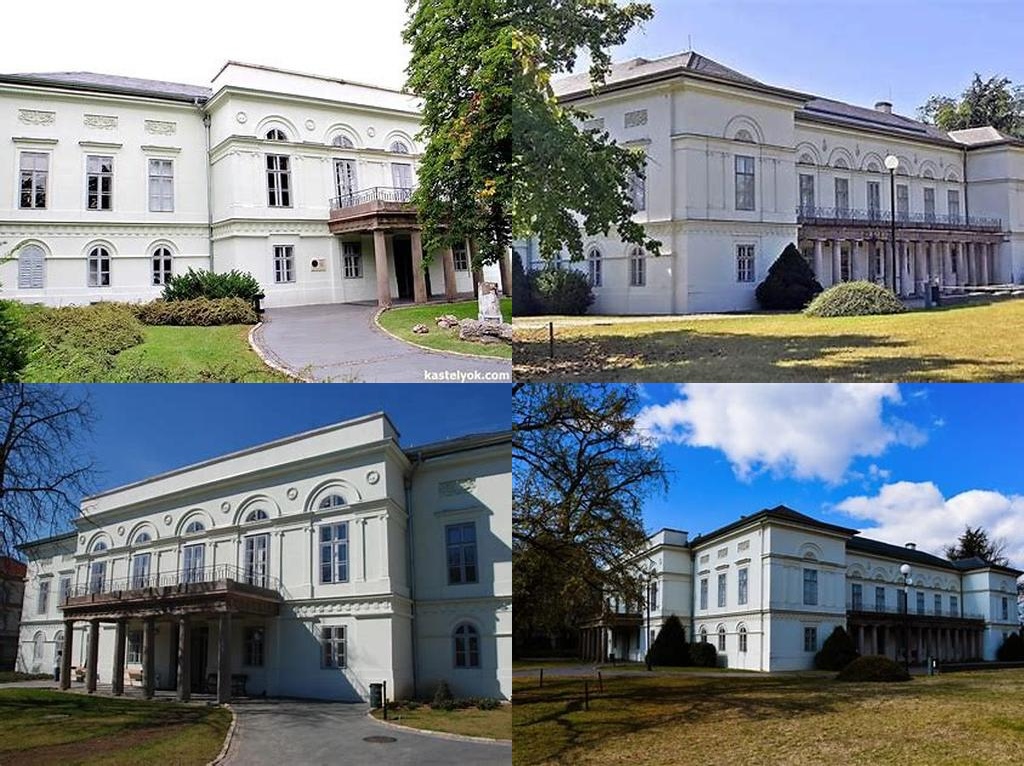
Orczy-kastély in Gyöngyös holds a special kind of quiet grandeur, the sort that reveals itself to you the longer you linger in its atmospheric halls and leafy grounds. Tucked within the gentle sweep of the Mátra mountains, this compelling Baroque-style manor is not just another ornate relic—it’s a living link to centuries of colorful history and human stories, surrounded by trees that remember more than any fence or plaque ever could.
Step onto the castle grounds and you’ll realize: there’s something almost cinematic about its weathered facade and expansive park. The main building, with its dignified symmetry and understated elegance, was completed in the late 18th century. While debate swirls about the exact year, it was sometime around 1789 when construction reached its completion, commissioned by the notable Orczy family—one of Hungary’s esteemed aristocratic lineages. The Orczys were not just landlords or collectors of fine things; they were also energetic reformers, supporters of education, and even patrons of groundbreaking literature in their age. As you trace your hand along the balustrades or peer out over the parkland from the upstairs windows, it’s easy to imagine these original owners welcoming guests during a candlelit soiree or piecing together plans for regional development over thick stacks of maps and ledgers.
The castle’s story doesn’t just end with faded frescoes or rococo embellishments. After the Orczys, the building experienced a range of uses and inhabitants, revealing its flexibility as much as its style. Over the 19th century, as revolution and war roiled across Hungary, the castle was repurposed—serving at different points as a teacher’s training college and then, after the devastation of World War II, a much-needed refuge and a public space. Today, perhaps its most interesting reincarnation has been as the home of Mátra Museum. The museum, founded in 1957, fills the old salons and chambers with a vibrant collection that ranges from natural history—the geological evolution of the Mátra hills, taxidermy of local fauna, the region’s famed fossils—through to art, historical documents, and archaeological finds that reveal just how significant little Gyöngyös truly is.
One of the collection’s highlights is the ornately decorated Knights’ Hall, which you could easily mistake for a tiny palace ballroom rather than a museum gallery. Its ceiling vaults and meticulously preserved stucco ornamentation make it a treat even before you’ve digested the exhibits. Throughout the castle, displays are woven seamlessly into the architecture—display cases blend with the rhythm of the windows and arches, making the experience immersive and intimate. You aren’t just looking at collections; you’re inhabiting the rooms where history genuinely unfolded.
What stays with visitors the most, though, is the way the site embraces both the wild and the cultivated. The surrounding park, dotted with ancient trees—many over two centuries old—is more than just landscaping; it’s a vital green heart right in the city center. Take a slow walk outside and you’ll pass marble sculptures, romantic bridges, and winding little footpaths frequented by locals and travelers alike. It’s a favored spot for quiet contemplation or for families gathering on Sundays, a tradition stretching back to the days when carriages, not cars, lined the drive.
What’s extra interesting is how the castle and museum reach deep into regional identity and pride. The people of Gyöngyös have always seen Orczy-kastély as something beyond real estate. It has survived city fires, wars, and the changing tides of Hungarian governance, yet it has always returned as a center for culture, knowledge, and gathering. Seasonal events and temporary exhibitions ensure that, even for repeat visitors, there’s a sense of anticipation—what will you discover this time? In spring, the park comes alive with wildflowers and picnicking students. In winter, the castle’s silhouette against a cold sky feels stark and poetic, its windows glowing with promise.
If you walk through those grand doors and imagine more than just the past—seeing instead the layers of life, ambition, and quiet resilience—then you’re part of the story, too. Orczy-kastély isn’t merely a monument; it’s an invitation to slow down, listen, and let the richness of Hungarian history wash over you, right there amid tree-shaded lawns and sunlit galleries.





